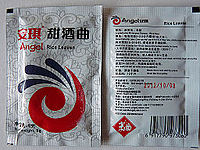
Photo from wikipedia
Litter bag method was conducted to investigate the decomposition characteristics of rice straw (6000 kg ha−1) and its associated microbial community under different nitrogen (N) addition rates (0, 90, 180 and 270 kg N… Click to show full abstract
Litter bag method was conducted to investigate the decomposition characteristics of rice straw (6000 kg ha−1) and its associated microbial community under different nitrogen (N) addition rates (0, 90, 180 and 270 kg N ha−1) under double-rice rotation. Generally, straw mass reduction and nutrient release of rice straw were faster in early stage of decomposition (0−14 days after decomposition), when easily-utilized carbohydrates and amines were the preferential substrates for involved decomposers. Straw-associated N-acetyl-glucosamidase and L-leucine aminopeptidase activities, which were higher under 180 and 270 kg N ha−1 addition, showed more activities in the early stage of decomposition. Gram-positive bacteria were the quantitatively predominant microorganisms, while fungi and actinomycetes played a key role in decomposing recalcitrant compounds in late decomposition stage. Straw residue at middle decomposition stage was associated with greater cbhI and GH48 abundance and was followed by stronger β-glucosidase, β-cellobiohydrolase and β-xylosidase activities. Although enzyme activities and cellulolytic gene abundances were enhanced by 180 and 270 kg N ha−1 application, microbial communities and metabolic capability associated with rice straw were grouped by sampling time rather than specific fertilizer treatments. Thus, we recommended 180 kg N ha−1 application should be the economical rate for the current 6000 kg ha−1 rice straw returning.
Journal Title: Scientific Reports
Year Published: 2018
Link to full text (if available)
Share on Social Media: Sign Up to like & get
recommendations!